Genre: Action Developer: Sega Ent. Publisher: Sega Ent. Players: 1 Released: 1991
If there’s one series after Sonic that’s recognized and lauded on Sega consoles, it must be Shinobi. Appearing on every piece of Sega hardware except for Dreamcast, the sword-slashing hero produced some of the finest games of the ‘90s, particularly on the Genesis. Joe Musashi’s exploits on that machine are the stuff of legend. Any Genesis owner worth his salt today has those three games in his library, and for good reason.
It’s unfortunate then, that the same level of praise isn’t heaped on the two Game Gear Shinobi titles. They filled the small screen with the same frantic level of ninja action that Genesis fans enjoyed, and they did it very well. The original game, released in 1991, was a great example of the proper way to bring a popular series to less powerful hardware, and it was successful enough to start what many consider to be a series that’s as good in many ways as its 16-bit brethren.
The original Game Gear Shinobi (known as The G.G. Shinobi in Japan) didn’t really try anything different, and Sega appeared more focused on porting its winning formula intact than anything else. All the classic elements of the series made the transition, and ninja hero Joe Musashi was once again thrust into the role of world savior. A powerful and dark force has taken over Neo City, and the Oboro clan has sent its most gifted students – Blue, Green, Pink, and Yellow – to investigate. None have returned and all are presumed captured. With few options left, the clan’s greatest warrior, Joe Musashi, suits up to complete their mission.
The Oboro ninjas may sound more like Power Rangers than masters of martial arts – they’re named for the color of their sashes – but they definitely have the skills needed to save the world. It’s only collectively that they are able to put those skills to their best use (hmm… maybe they are like the Power Rangers). Each of them possesses a special ability that is needed to progress through the game’s multiple rounds of danger. Green has a high jump, Pink clings to ceilings, Yellow walks on water, and Blue uses his crescent blade weapon as a grappling hook. The rounds are varied and filled with power-ups, and each ninja must be rescued first before they can be added to the team. Until then, it’s up to Musashi alone to navigate through whichever of the four rounds is selected first. When all the ninjas are assembled, the fifth and last level, Neo City, unlocks. It’s a brutal, trap-ridden nightmare that’s sure to give players high blood pressure. Some of the other levels are hard, but this last level is in a league of its own.
The design choice of letting players select the ninja they want to use is something that Shinobi on Game Gear does differently than the other games in the franchise, and it’s a great way to vary the action. The ability to play each game differently by starting with a different stage and rescuing a different ninja each time adds to the variety, a feature perhaps much more needed in a portable game than on a console. Variety is likely the defining feature of this game, and it almost seems like Sega went out of its way to distinguish the Game Gear installment as much as possible from the Genesis series. The use of different ninjas with separate skills is a wonderful addition that I really wish would be revisited in the series. We all know Musashi was part of a clan, and it’s great to see other members finally get involved.
The Game Gear does a solid job of handling Shinobi. Established screen problems aside, the graphics are bright and nicely done. Nothing seems to have been squeezed onto the handheld, and instead Sega wisely made the visuals competent without trying too hard to compete with the Genesis. Shinobi was an early title, so the machine’s power hadn’t yet been fully tapped, but what’s there looks nice and there are some excellent scrolling backgrounds. Each level stands out on its own, and there isn’t a sensation of “I’ve already seen this” as there is in many other 8-bit games.
The soundtrack is the star feature of the presentation, though. Master composer Yuzo Koshiro returned to score the game, and he added mixed versions of the Genesis themes to new tracks, creating a great score that’s worth hooking your Game Gear to an eternal speaker for. I know Shinobi has always been associated with great music, but a lot of that comes from The Revenge of Shinobi, despite there being so many other games in the series. The Game Gear versions don’t get enough attention in this area, and they really do sound great.
Overall, the only complaint I have with the first Game Gear Shinobi comes from the poor screen, but that’s not the game’s fault. Perhaps the only true negative here is that Shinobi can be brutally difficult sometimes, but anyone with some patience and an AC adapter should be able to overcome the challenge. Sega produced an excellent action/platformer that is a great addition to a legendary series, and it deserves more attention. A release on the Nintendo Wii eShop in 2012 was welcome, as it fixed the screen problems, but I’d really love to see a remake of these games with more modern visuals. This handheld series is one that Sega should certainly revisit.
Score: 8 out of 10

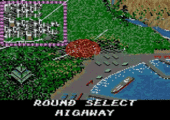
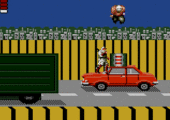
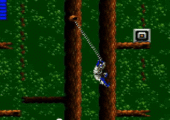
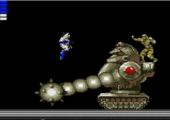
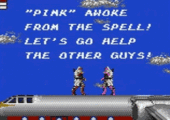
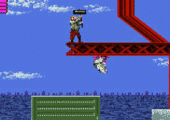
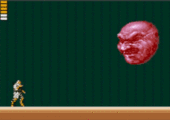
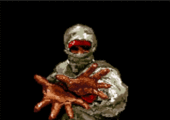
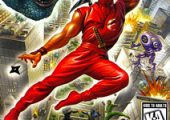
Recent Comments